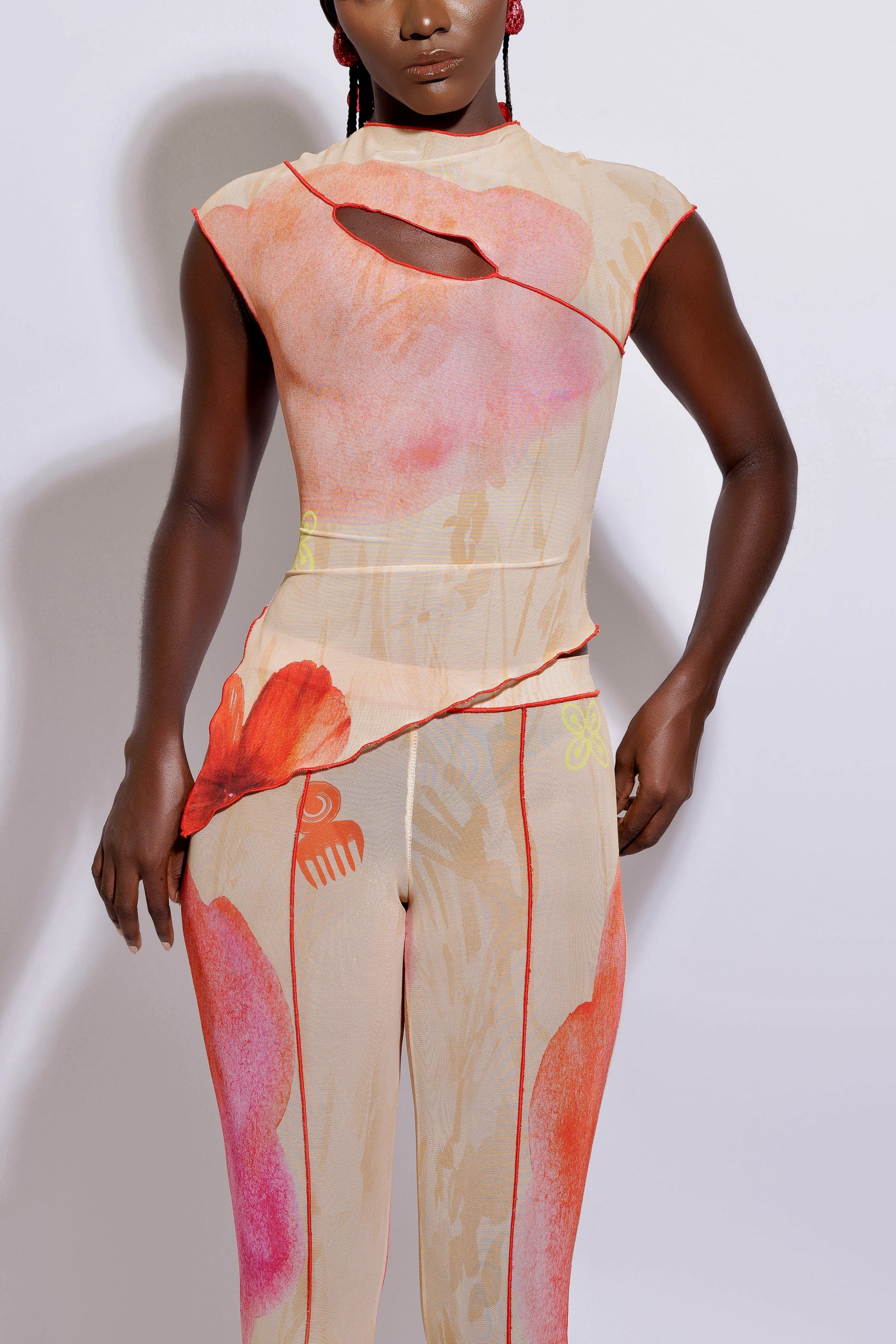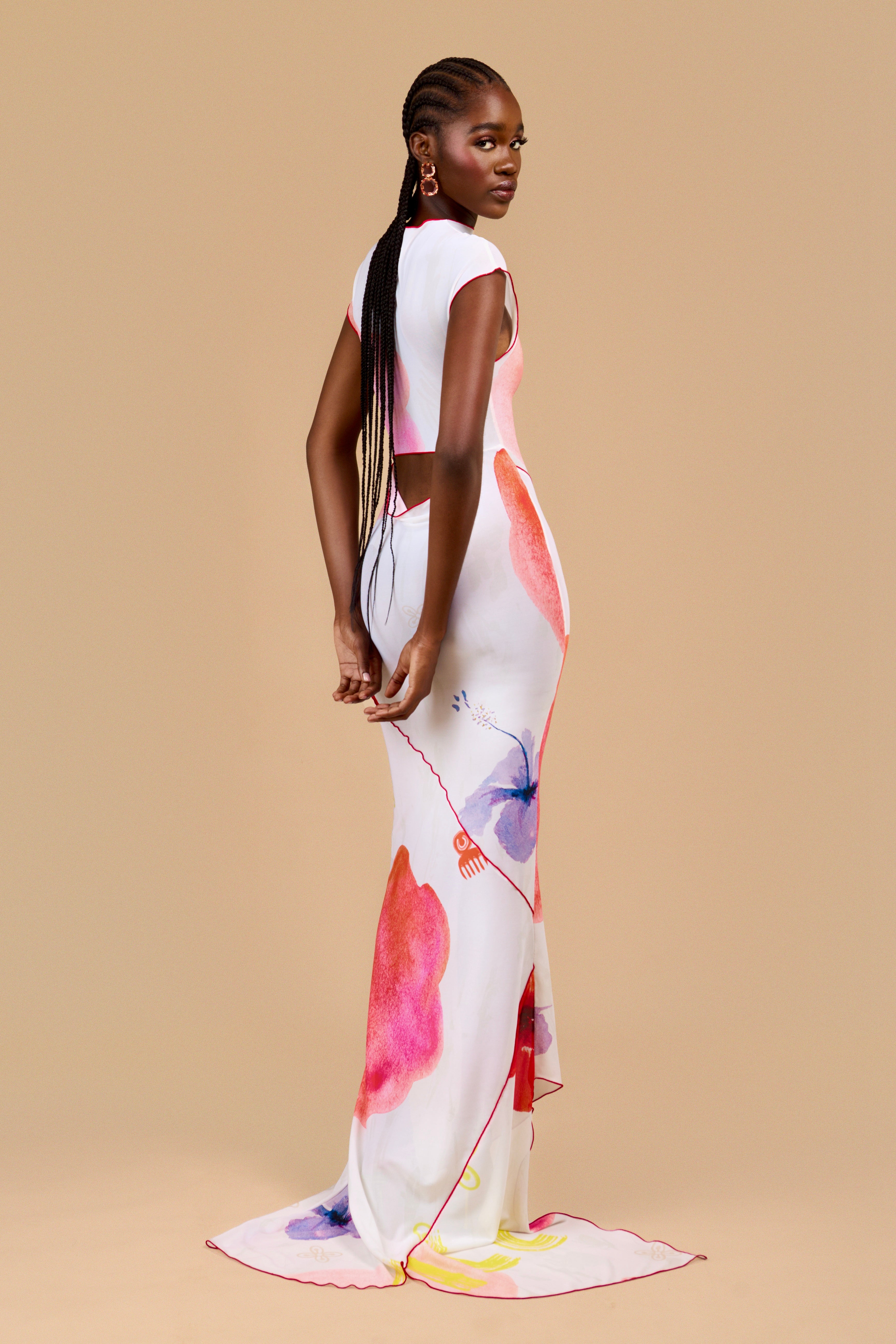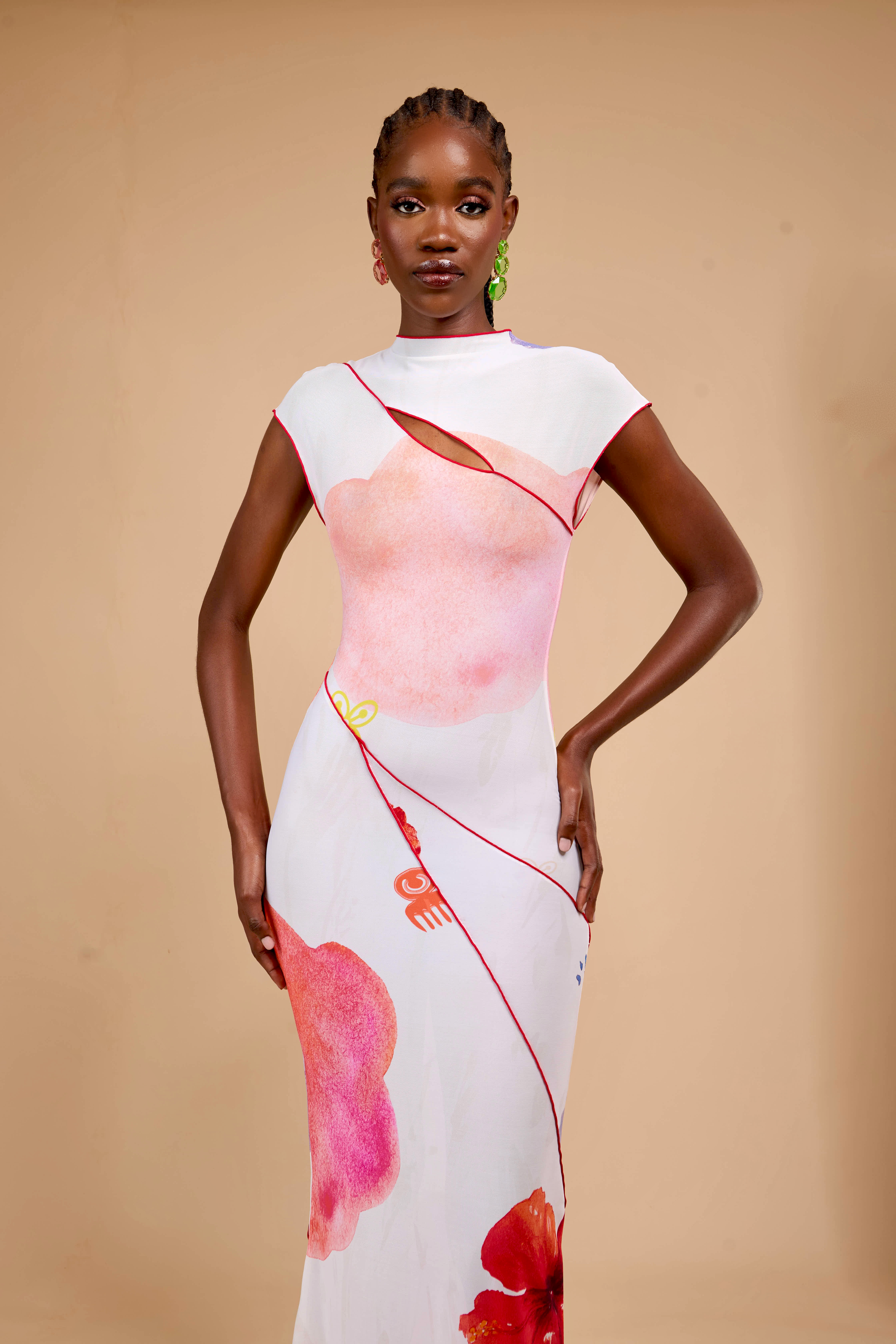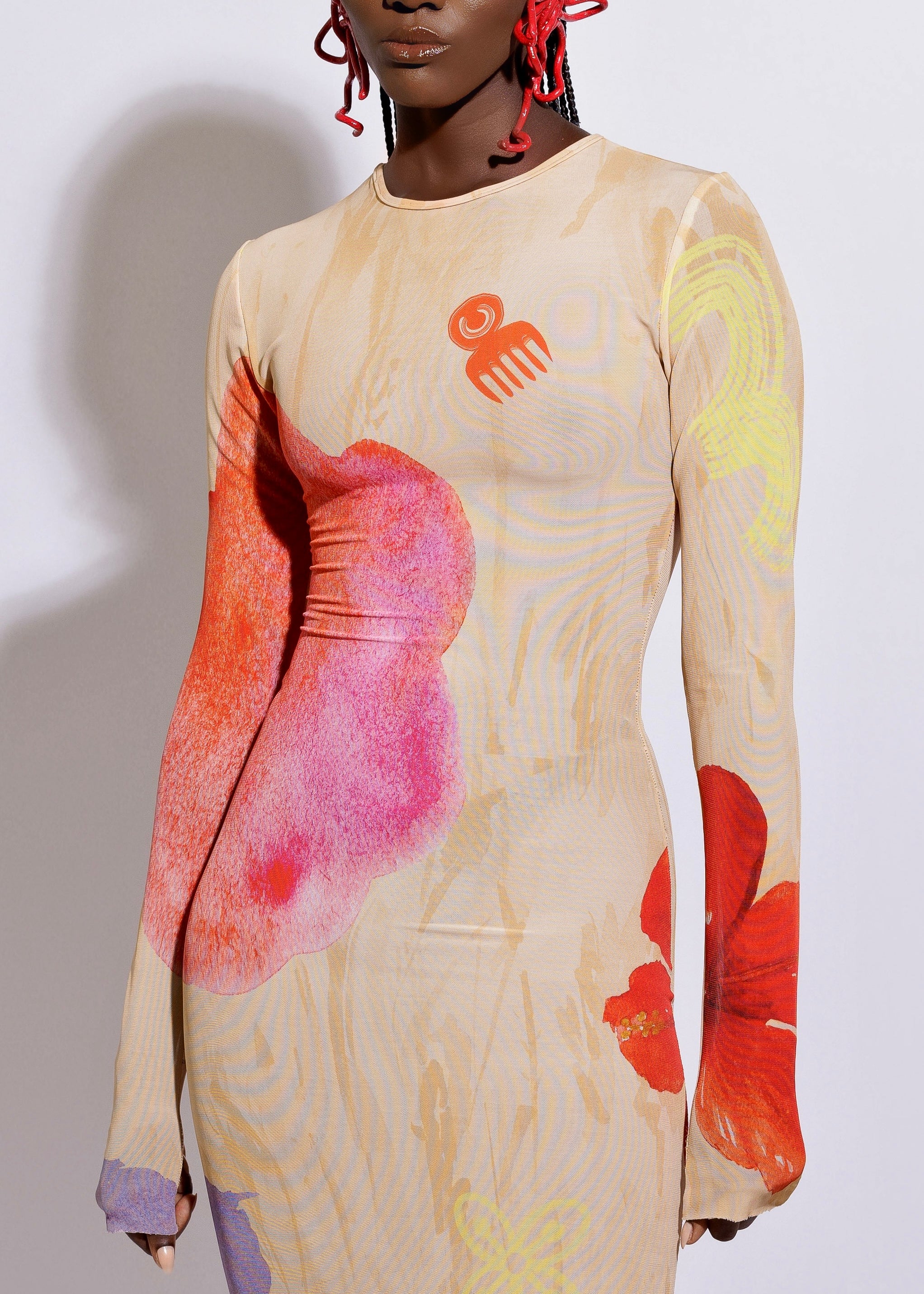At DLCT, we believe clothing can speak. Softly, defiantly, and powerfully. The ILÉ print is the first language we created. For some, it’s simply striking. For others, it feels like home. But at its core, ILÉ is a living story. A personal altar. A gentle defiance. A declaration of becoming.
Whether wrapped in the drama of the SISI gown or the ease of the BOTA set, ILÉ is not meant to be worn passively. It is meant to be claimed personally.
Adornment as Communication: A Heritage Remembered

Image source: Afroellemag instagram
Long before runways, trend reports, or fashion weeks, there was adornment.
There was the slow pressing of pigment into skin. The carving of symbols into wood and stone. Symbols into facial structures. The braiding of meaning into hair. The wrapping of cloth not just for covering. Etched calabashes, carved doors, or handwoven cloths, our cultures have always adorned.
Across the African continent, adornment has always spoken, loudly or softly, but never without intention. In kingdoms and compounds, in ceremonies and quiet rituals, we adorned ourselves and our surroundings with precision, symbolism, and soul.
These weren’t just accessories. They were artifacts of identity.
A beaded waistline to signal womanhood.
A textile motif to mark clan or caste.
A scar etched to honour survival.
A bracelet passed down to keep memory alive.
Homes were painted. Palaces inscribed. Even the calabashes we drank from told stories.
Adornment was how we marked space. Time. Transformation.
This wasn’t decoration for decoration’s sake. It was a code. A map. A mirror. A proclamation.
It was how we said, “This is who I am. This is what I carry. This is what I honour.”
And it still is.
From the Adinkra symbols of the Akan to the Nsibidi ideograms of southeastern Nigeria, from the geometry of Fulani hairstyles to the sacred weavings of Kente and Akwete, each mark told the story of a people and the journey of an individual. Adornment was art, yes... but more importantly identity, spirituality, memory, resistance.
And this is the lineage from which our ILÉ print emerges.
ILÉ: A Living Continuation
A modern ritual wrapped in boldness. Each curve and symbol in the print carries echoes of the past and breathes new life into the present.
To the wearer, my desire is that ILÉ is not just a floral motif but that It becomes a living artwork designed with intention to be a reflection of your journey.
ILÉ is adornment for the woman who remembers.
The woman who refuses to shrink.
The woman who wears her story in plain sight— and yet, never tells all.
ILÉ is not just worn.
It is invited.
It is entered.
It is interpreted by the one who chooses it— shifting meaning with every body it graces.
This is the beauty of our heritage: Adornment was never just for beauty’s sake. It was always about becoming.
The Story Continues…
Soon, ILÉ will return in new forms and a new hue. So however you wear it, know that you are stepping into more than fashion. You’re stepping into a lineage of self-expression, of meaning-making, of adornment as truth.
And the next time you slip it on, ask yourself: What am I choosing to declare today?
ILÉ print pieces will be available soon in brand new styles and colors that gift you new ways to wear your story. Sign up to our email list to be the first to know when they arrive.
x
Kike, Founder DLCT Contemporary.
Cover Image source: https://www.sciencephoto.com/media/110430/view/man-of-the-karo-tribe-murle-region-ethi



















Leave a comment